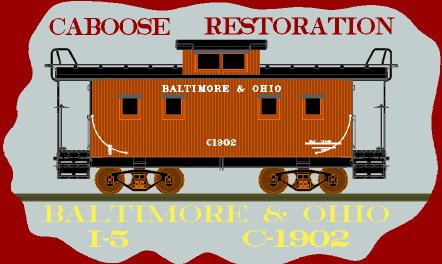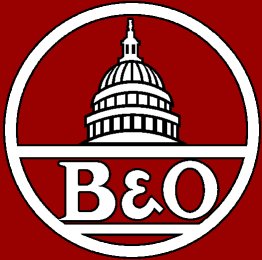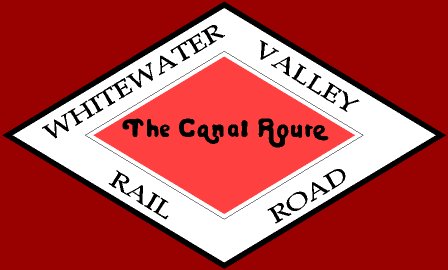C-1902 History By
Railroad Historian Dwight Jones.
B&O Caboose
C-1902
By Dwight Jones
In
general, how the
railroad caboose was born has been the subject of much speculation over
the
years, and various stories exist which have tried to capture this
beginning. Some have tracked it to the
1840s.
With the introduction of railroads in the United States,
and the subsequent birth of
freight trains, it was necessary for some crew members to ride the rear
of the
train, watching for problems, providing rear flagging projection
against
following trains. This rear car also
served as an office for the train “conductor”, and to provide a
transportation
car for brakemen, which had to leave the car and scurry over the tops
of
freight cars to set brakes, before the introduction of the air brake. Normally an empty box car served this
purpose.
By the 1840s it was
beginning to emerge that a
specialized car for these purposes was necessary—and the caboose was
born.
Baltimore & Ohio
reported that they had 4 cabooses
in 1866. In 1873 that number had grown
to 121 cabooses. B&O caboose
ownership peeked at 1,346 cabooses in 1928.
On the Baltimore & Ohio,
the standard caboose of
the 1870s and into the early 20th Century, was the
four-wheel
“bobber” caboose. By 1912 there were
nearly 1200 of these cabooses in service on the B&O.
The state of Ohio
passed a law in 1913 effectively banning the four-wheel “bobber”
caboose in Ohio, and
railroads had to design and construct new eight-wheel cabooses which
were much
larger than the “bobber” cabooses then in service.
The first new B&O
eight-wheel, system-standard
cabooses emerged from B&O shops in 1913, and were assigned caboose
class
I-1. Improvements to this original
design were made in subsequent years and by 1922 additional new
cabooses were
built, in B&O shops, which were classed as I-1A.
These early eight-wheel cabooses were
constructed almost entirely of wood, following the car building
practices of
the time.
Further improvements to
these early eight-wheel caboose
designs were made by B&O car engineers, and beginning in 1924,
B&O
started to build the class I-5 caboose.
The I-5 caboose featured
many upgrades over predecessor
B&O cabooses. For the first time
steel was used in the construction of the caboose bodies.
A steel frame was a key feature of the new
cars, and the ends were constructed of steel sheathing, resulting in
the first
composite steel-wood cabooses on the B&O.
The first car, numbered
C-1900, was built in B&O
shops, Baltimore, Maryland. B&O car
engineers were housed in an
office adjacent to the shops and this allowed them to study
construction of
this first caboose, and to make necessary drawing changes, revisions,
and
clarifications to shop workers quickly.
This first car was sent
around the B&O system for
inspection at various facilities by company officials and operating
department
employees. Feedback received from this
exercise allowed additional modifications to be made prior to building
the
balance of the quantity that B&O needed.
The balance of the order was
assigned to the B&O
shops at Washington, Indiana, and
a total of 401 class I-5 cabooses were constructed between 1924 and
1929. Only 400 cars were planned to be
built, but
one car was wrecked shortly after being built, and a replacement for it
also
was built, resulting in 401 cabooses being assigned the 400 road
numbers from
C-1900 to C-2299. This was the largest
batch of cabooses ever built by Baltimore & Ohio.
The class I-5 cars also were
the last cupola cabooses
built by the road. Beginning in 1930 the
first bay-window caboose was built in B&O shops, and from that time
on,
every new caboose added to the B&O caboose fleet was of the
bay-window
style.
B&O caboose C-1902, was
built at B&O shops, Washington, Indiana, in
November 1925 as part of that large lot of class I-5 cars.
These class I-5 cabooses
were used all over the
13-state B&O system. Because of
operational problems, many of them received extensive modifications
during
their service years.
One of the earliest, and
most serious, of the problems
with the I-5 cabooses is that they were prone to be pushed off the
track in the
mountains of West Virginia and Pennsylvania when
large steam locomotives were coupled behind them to help push trains
over the
steep mountainous grades of the region.
The problem was particularly prevalent when the train would go
around a
sharp curve while being pushed uphill.
B&O lengthened the
wheelbase on many cars from the
class from 15 feet to 19 feet to help stabilize the cars when used in
mountain
pusher service. This resulted in the
modified cars being reclassed as I-5C.
This helped some, but was not the ultimate solution. B&O shop forces next stripped the
interiors from many cars and poured concrete floors in the cabooses,
which were
further weighted by adding scrap metal in the concrete.
This additional weight increased the cars’
overall weight from 20 tons to around 31 tons.
This added weight, plus the lengthened wheelbase solved the
problem, and
resulted in modified cars being reclassed as I-5D.
Throughout the years a great many of the
original I-5 class cabooses were modified at several B&O shops to
the
heavier I-5D version, including caboose C-1902 on the Whitewater Valley. It was
modified to an I-5D at B&O’s Washington, Indiana,
shops in December 1957.
Baltimore & Ohio
assigned a major caboose
refurbishment program to the Chillicothe
shops in 1970-1971. From all over the
B&O, old red I-5 family cabooses arrived at Chillicothe for
repair and repainting. Several dozen of
the I-5 family cabooses were outshopped from the Chillicothe
shops during this program—as were cabooses from other of B&O’s
caboose
classes. The cars gave up their red
caboose paint at Chillicothe and
the repaired cars were repainted bright yellow—as directed by B&O
parent
Chesapeake & Ohio. C&O cabooses
had long been painted yellow.
B&O
C-1902 emerged from
the Chillicothe
shops in bright yellow paint in September 1971, at which time plywood
sheathing
was added over the tongue-and-groove side sheathing.
The I-5 family cabooses
served the B&O well, with
some cars remaining in service for over half a Century.
The last of the 400 cars was retired by
B&O in the early 1980s.
Many
cars were acquired by private owners and museum
groups for display after their railroad careers were finished.
Nearly 200 of the original 401 were sold by
B&O to private individuals or organizations. Many of these
were donations—given away by
B&O for worthwhile public display.
Copyright © 2005
by Dwight Jones
This history of
B&O caboose C-1902 has been compiled
by B&O caboose historian Dwight Jones of Columbus,
Ohio, who has spent over
30 years
researching the history of B&O cabooses.
Jones is the author of several books on caboose history, has authored
numerous magazine articles on the subject, and has served as a
consultant to
the B&O Railroad Museum in Baltimore, Maryland.
I-5 Date History By
Railroad Historian Dwight Jones.
| B&O Caboose C-1902 |
| Selected
Dates in the History of the Car |
| Compiled
by |
| Dwight
Jones |
|
|
| Date |
Event
Description |
| 11-25 |
Built
new at B&O RR Co. shops, Washington, IN |
| 3-53 |
Brakes
upgraded to "AB" type at B&O shops |
| 12-11-57 |
Converted
to class I-5D at B&O shops, Washington, IN |
| 10-20-61 |
Caboose
operating into Ohio on the St. Louis Division |
| 3-1-68 |
"COTS"
work performed at B&O shops, Chillicothe, OH |
| 4-68 |
Class
1 repairs made and repainted red at Chillicothe, OH |
|
(after shopping, caboose
sent to Newark, OH, for service) |
| 7-1-68 |
"In-Date-Test"
mechanical inspection, Newark, OH |
| 11-16-69 |
Automatic
Car Identification (ACI) plate added at B&O shops |
| 5-70 |
Caboose
in service at Newark, OH |
| 9-24-71 |
"In-Date-Test"
mechanical inspection, Chillicothe, OH |
| 9-24-71 |
Trucks
repacked at B&O shops, Chillicothe, OH |
| 9-71 |
Class
1 repairs made; repainted to yellow scheme, Chillicothe |
| 9-71 |
plywood
sheathing added to car sides at Chillicothe shops |
|
(after shopping, caboose
sent to Newark, OH, for service) |
| 11-73 |
Caboose
written up for "Dismantle" at Newark, OH |
| 1-18-74 |
Stored
in Heavy Bad Order at B&O shops, Chillicothe, OH |
| 1-31-74 |
Caboose
sold to Whitewater Valley RR, Connersville, IN |
| 3-1-74 |
Stored
in Heavy Bad Order at B&O shops, Chillicothe, OH |
| 4-74 |
Caboose
officially retired from service on the B&O |
| 11-16-81 |
Caboose
in service on the Whitewater Valley Railroad |
| 7-18-99 |
Caboose
Removed from Service for refurbishment Whitewater Valley Railroad |
| 4-14-01 |
Caboose
under refurbishment on the Whitewater Valley RR |

 From
the B&O to the Whitewater Valley Railroad
From
the B&O to the Whitewater Valley Railroad